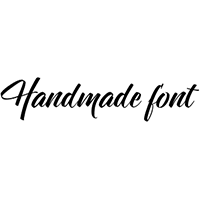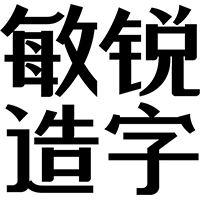Typography for Lawyers

 When the FontFeed featured a brief review of "Typography for Lawyers" a couple of days ago I finally felt encouraged enough to ask about something that puzzled me ever since I first saw the book. Matthew Butterick's desk reference is commendable when it comes to mission, structure, content and style of writing. However, as a book designer (as well as a teacher), I have ambivalent feelings about the vast choice of typefaces applied throughout the volume. Butterick uses no fewer than eight type families, namely:
When the FontFeed featured a brief review of "Typography for Lawyers" a couple of days ago I finally felt encouraged enough to ask about something that puzzled me ever since I first saw the book. Matthew Butterick's desk reference is commendable when it comes to mission, structure, content and style of writing. However, as a book designer (as well as a teacher), I have ambivalent feelings about the vast choice of typefaces applied throughout the volume. Butterick uses no fewer than eight type families, namely:
LyonText roman, italic, bold and small caps for body copy and subheadsArnoDisplay for chapter headingsQuadraat Sanson the cover and inside for tips, tables and info-boxesCheltenhamfor subchapter headingsVerlagBook and Black for cross headings, captions and marginaliaAlixfor monospaced textAmiraBold caps for captions to examplesWhitneyIndex White Round for enumerationplus more typefaces in samples which I will not list here
And again different typefaces on the website (via @font-face):
Concoursefor headings (a new sans-serif by Butterick in progress)Charterfor Text

Six of eight families in the picture above, Arno for the headline, Cheltenham Bold Condensed in the margin, Lyon for body copy and Lyon Italic for subheads in the margin, Verlag for marginalia and in all caps for cross headings, Quadraat in the "How to" tips, Amira all caps as caption to samples. Click any images to enlarge.

While all of the above are excellent typefaces, each of them suitable for a whole publication like this, I see no real need to combine them all in one book. Why not pick just two or three of them and make use of their full range of variants, styles and weights?
I tried to list the typefaces in order of appearance which usually resembles the hierarchy roughly but couldn't clearly make it out. At some point a too diverse typography can also lead to confusion rather than guidance. What kind of text am I reading? What belongs together? Differentiation of various types of texts and structures is necessary but shouldn't feel arbitrary.
So I asked the author and designer of the book, and got a wonderful report about dauntless eclecticism, orchestrating typefaces, and what happens when you work on a project over a long period of time (which I should know all too well). Now I feel like an academic party pooper. Matthew writes:
That's an interesting story (I mean, if you like fonts) —
While writing the book, I tried to find a balance in tone between 1) authoritative and useful, and 2) approachable and relaxed. While designing the book — which I did in parallel with the writing — I wanted that tone to carry through visually. I wanted readers to open the book to any page and say "oh, this looks interesting" and not "oh, this looks like a homework assignment." In other words, make it read more like a magazine than a dictionary.
That was fine by me, because my favorite typography has always been the serious-but-eclectic American magazine, starting with Spy in the '80s and currently best represented by The New York Times Magazine and New York magazine (which is absolutely my favorite thing to read every week).
My affinity for this approach is also probably traceable to my original typographic training, which was in a small letterpress shop. The essence of letterpress work is making do with what you've got and finding novel ways to combine things. It's an eclecticism borne from necessity and limited choice (which is different than eclecticism borne from unlimited choice).
Early designs of the book used fewer families. I took my own advice and started by choosing a body-text font. My first choice was Sabon, but I wanted to give a push to a current type designer, so I discovered Lyon and went with that. The sidebars needed to contrast with the main text. Metro is one of my favorites, but it hasn't aged well, so I used the Metro-influenced Verlag.
Nearly everything in the book was Lyon or Verlag at some point. For certain elements, functional and visual considerations dictated otherwise. For instance, the section headings in the margins were originally Lyon Bold. But late in the design, I had to make those margins a pica narrower, and Lyon Bold didn't fit enough text. So I switched to FB Cheltenham.
A similar story for the technical instructions. At legible point sizes, Lyon and Verlag took up too much vertical space. So I went with FF Quadraat Sans italic, which is quite condensed but not steeply angled, and has a color and texture that blends smoothly with Lyon.
Arno Display, used for chapter headings in the book, was originally the font on the home page of the TFL website, so that was a nod to visual continuity. For monospaced text, of course I used my own design, FB Alix. As for Whitney Index, I would've used Verlag Index if it had existed, but it didn't, so I went with the next best thing. (There's that letterpress resourcefulness at work.) And Amira — I just happen to like it a lot and wanted to find a place for it. So that's some gratuitous eclecticism.
In his article, Yves suggested a font superfamily. They have their place, but I have mixed feelings about them. First, a lot of superfamilies have a great sans and a not-so-super serif, or vice versa. Second, and more importantly, superfamilies can match a little too well, creating a somewhat relentless consistency from page to page.
I think about it like the difference between a song played live by a full band, where everyone puts emphasis in slightly different places, versus a recording where all the parts are played by one musician with a multitrack recorder. True, I do recommend in the book that mixing fonts by the same designer can work well. But ordinarily, I prefer to mix fonts from different designers, for that "full band" feel. — Matthew Butterick

"Less is more" — Butterick on mixing fonts in "Typography for Lawyers". "Most documents can tolerate a second font; many fewer can tolerate a third; almost none can tolerate four or more." Click to enlarge.



Chapter on system fonts with a warning in Helvetica condensed (right): "This chart is offered as a harm-reduction device." Click to enlarge.

































 闽公网安备35010202000240号
闽公网安备35010202000240号